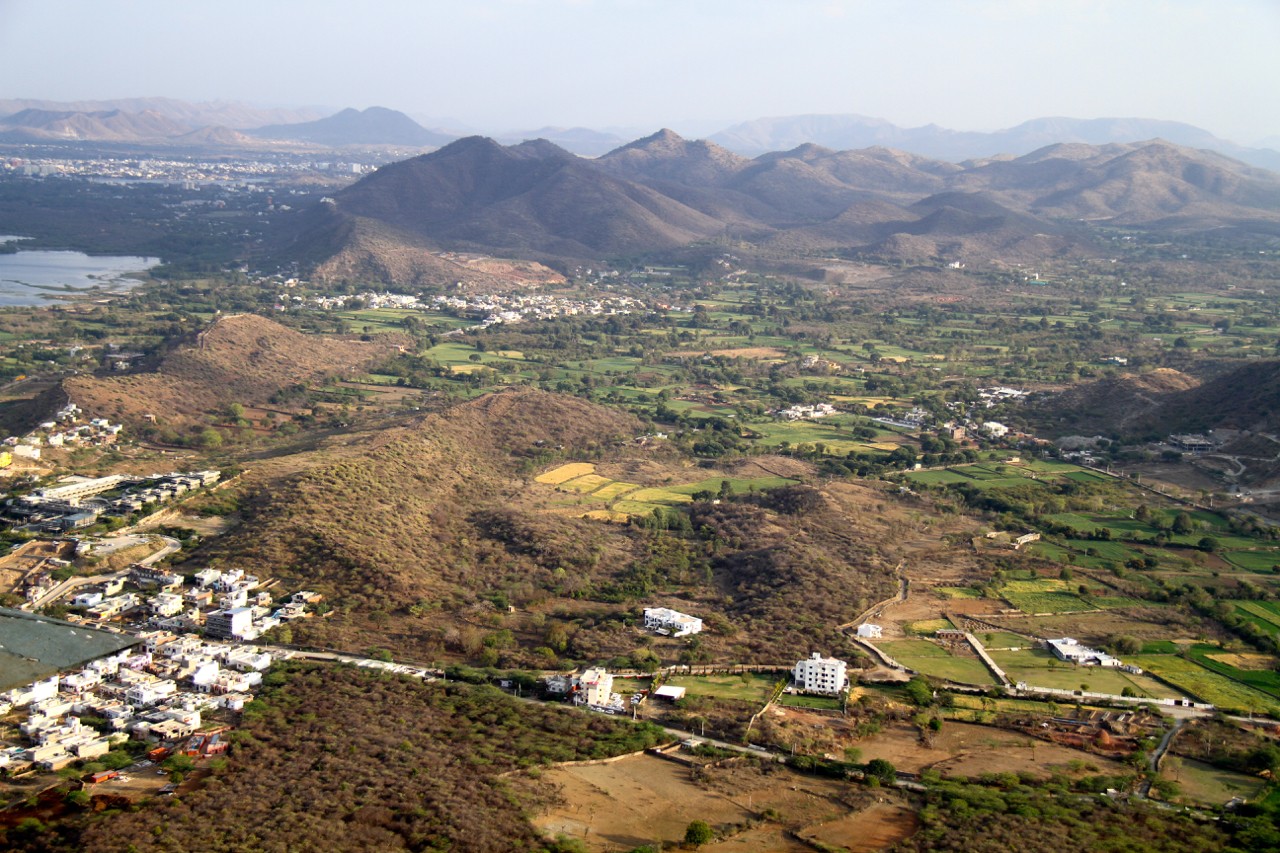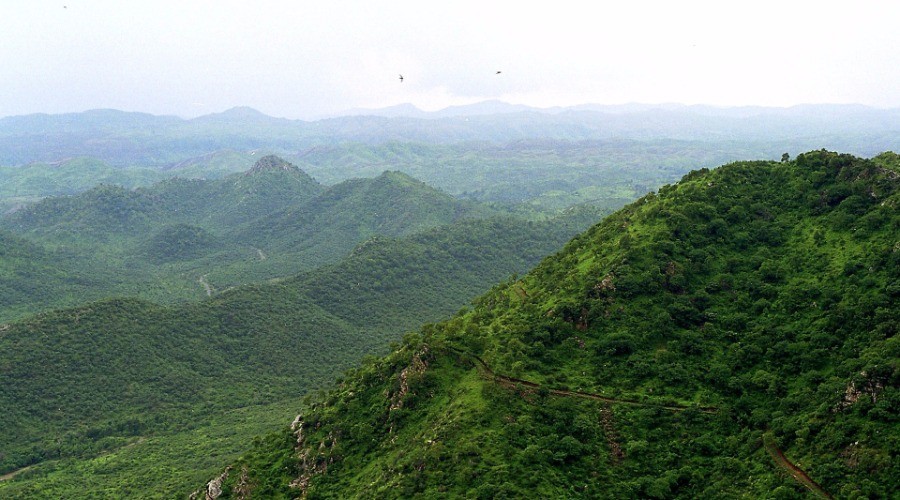The Aravallis: From Forest To Desert
Green cover in the Aravallis is rapidly disappearing
The Aravalli Range, running from Delhi through Haryana into Rajasthan and Gujarat, are the remnants of one of the oldest mountain ranges in the world – incomprehensibly old, as they’ve been described.
Well, after a billion years of existence, they’re now in trouble. In recent times, the Haryana government has been on a deforesting rampage in the Aravallis. A few months ago, they felled over 7,000 trees in the Aravallis by declaring green area as non-forest land for a real estate project. And they’ve just given the go-ahead again for the felling of trees in Faridabad, citing a 1976 survey record which mentions only two trees in the area. This could set the precedent for further deforestation in areas such as Mangar Bani, a sacred grove that’s been protected by the local communities for over a century.

A view of Udaipur city and the neighbouring Aravalli mountains region. Photograph courtesy Wikimedia Commons CC BY-SA 4.0
This is not a new trend. In 2010, Haryana missed its green cover target under the State Forest Policy of 2006, which mandated the state to have a minimum of 20 percent of forest cover. Haryana’s forest cover? 3.6 percent. The effects on the ecosystem are cascading: with the loss of most major tree species, mesquite and kikar are the two predominant tree species now found in these ranges. Mesquite or Prosopis juliflora is one of the most indignant invasive species recorded in India, and is already widespread across the Aravallis.
Based on studies of declining productivity and forest cover in the Aravallis, a recent report by the Wildlife Institute of India warned that the consequences would be serious, and could lead to desertification in the areas around Haryana, especially Gurugram, Faridabad, Bhiwani, Rewari and Mahendergarh.
The state government claims to be meeting the competing demands of urbanisation and environmental protection by adopting measures such as fencing and planting trees. Clearly, one demand is taking precedence over the other.
Cover: The Aravalli range in Rajasthan; photograph courtesy Wikimedia Commons CC BY-SA 2.5
